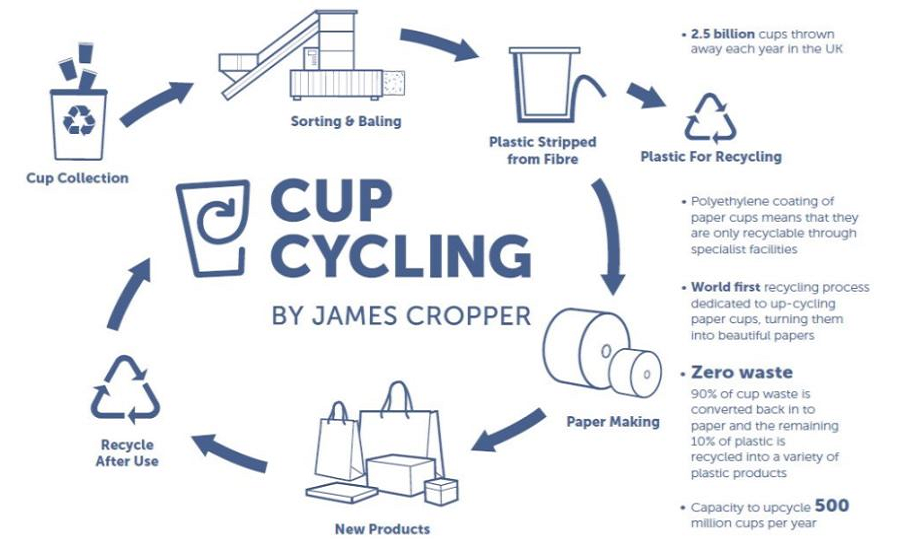In an age where convenience dominates modern consumption, disposable paper cups have become a symbol of both practicality and environmental concern. Each year, billions are used worldwide, often for just a few minutes before ending up in landfills. While their paper appearance suggests eco-friendliness, the hidden plastic lining that prevents leaks also makes them difficult to recycle. For businesses striving to enhance their sustainability credentials, tackling this issue represents both a challenge and an opportunity.
The hidden complexity of paper cup recycling
Most paper cups are lined with polyethylene — a thin layer of plastic that makes the cup waterproof but complicates recycling. Traditional recycling systems cannot easily separate the two materials, meaning most cups are discarded as general waste. In the UK alone, over 2.5 billion cups are used annually, with less than 1% being recycled effectively.
The good news is that innovative recycling facilities are emerging to address this challenge. Specialist processors now have the technology to separate the paper and plastic layers, reclaiming the high-quality paper fibres for reuse in new products such as packaging, tissues, and even stationery. However, widespread accessibility remains an issue.
Collaborative action and responsibility
Businesses across sectors — from cafés and restaurants to office complexes — play a pivotal role in improving recycling outcomes. Introducing designated cup collection bins, partnering with recycling services, and engaging staff and customers in awareness campaigns can significantly increase recovery rates.
Major coffee chains have already made commitments to close the recycling gap. Costa Coffee, for instance, has implemented cup collection points across hundreds of stores, aiming to recycle as many cups as it sells. Meanwhile, Pret A Manger and Starbucks continue to explore reusable cup incentives, encouraging behavioural shifts among consumers.
Consumer habits and environmental awareness
The public’s understanding of sustainable waste practices is improving, but confusion persists. Many individuals assume paper cups are easily recyclable due to their appearance. Education remains key — both in-store and online — to ensure that people understand the correct disposal methods. Signage, QR codes, and digital campaigns can help bridge the knowledge gap and inspire long-term change.
The question of where to recycle paper cups is now becoming easier to answer thanks to dedicated drop-off points at supermarkets, coffee shops, and certain municipal recycling centres. Online recycling directories and local council websites also provide clear guidance, making it more convenient for both consumers and businesses to take action.
Technology and innovation in recycling
Emerging technologies are playing an essential role in making paper cup recycling more viable. Companies are investing in advanced pulping systems that separate materials efficiently, reducing contamination and improving yield. Additionally, research into biodegradable and compostable alternatives continues to expand, with some new designs replacing plastic linings with plant-based resins.
Beyond recycling, circular economy initiatives are encouraging cup return schemes and reusable models. Start-ups are developing app-based systems where customers borrow reusable cups with digital deposits, returning them at participating outlets. This approach not only reduces waste but fosters a shared sense of responsibility between businesses and consumers.
The road to sustainable change
Ultimately, solving the paper cup problem requires cooperation between manufacturers, retailers, consumers, and local authorities. Regulation and infrastructure must align to support the transition towards sustainable packaging and responsible waste management. Businesses that take proactive steps now will not only reduce their environmental footprint but also strengthen brand trust among eco-conscious consumers.
By rethinking how single-use items are designed, used, and disposed of, we can turn what was once a throwaway convenience into a closed-loop success story. The transformation may take time, but it begins with simple, practical actions — from installing cup recycling stations to encouraging reusable habits and investing in better materials.

